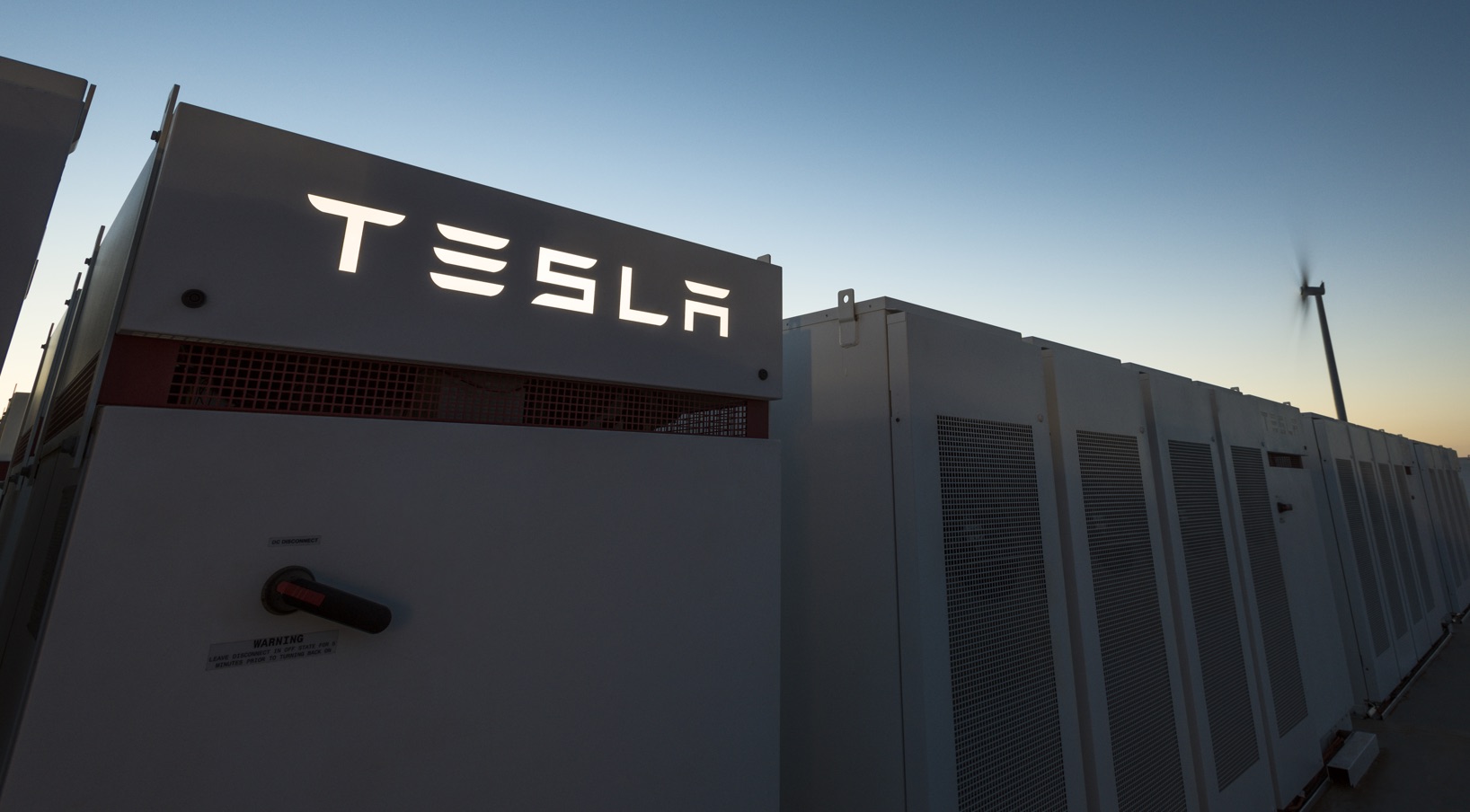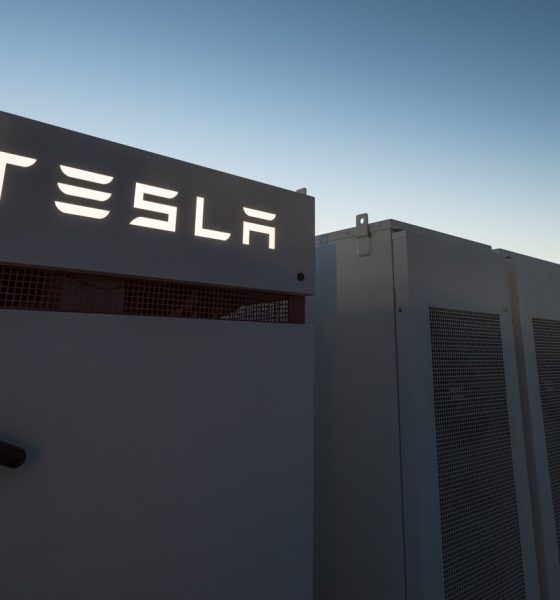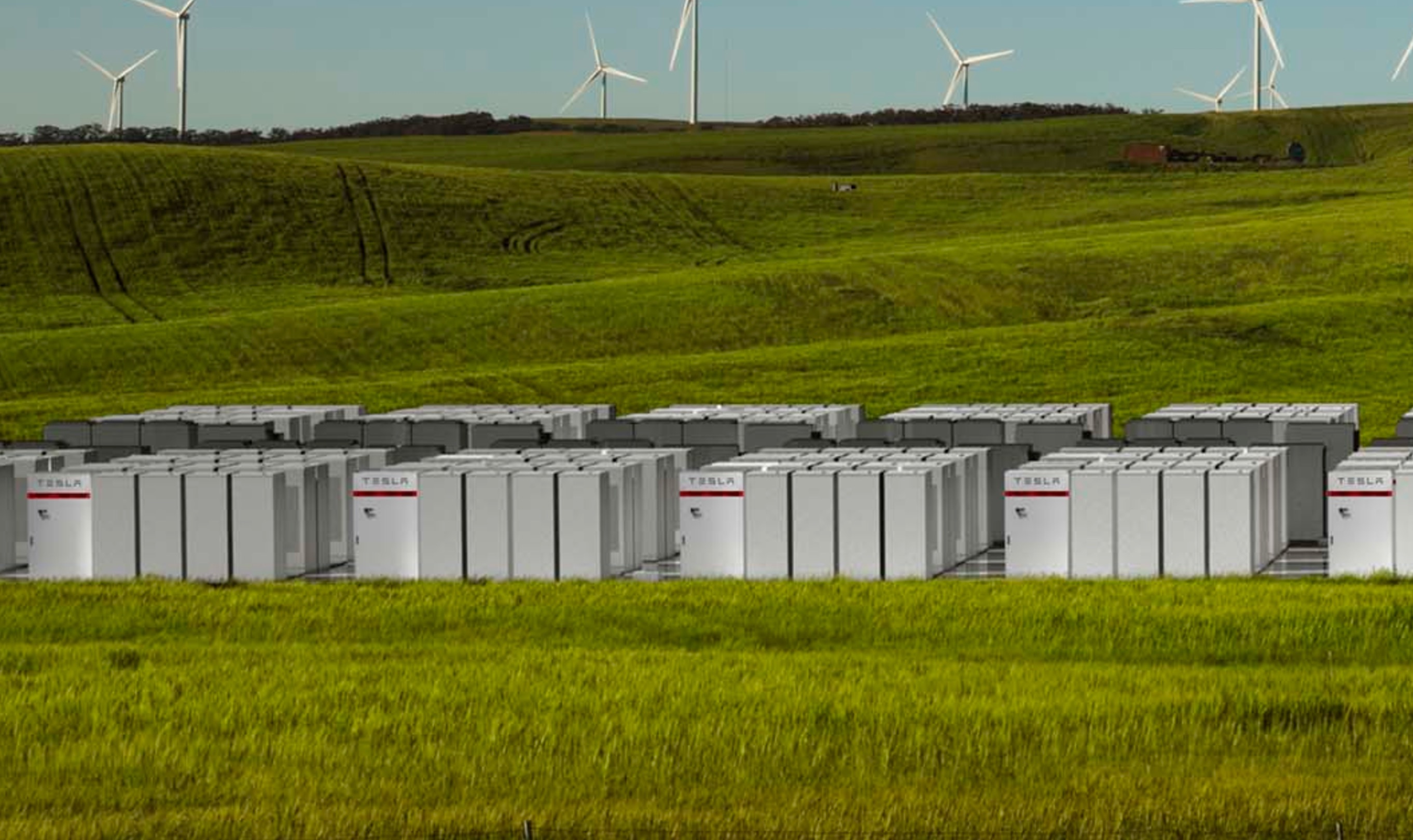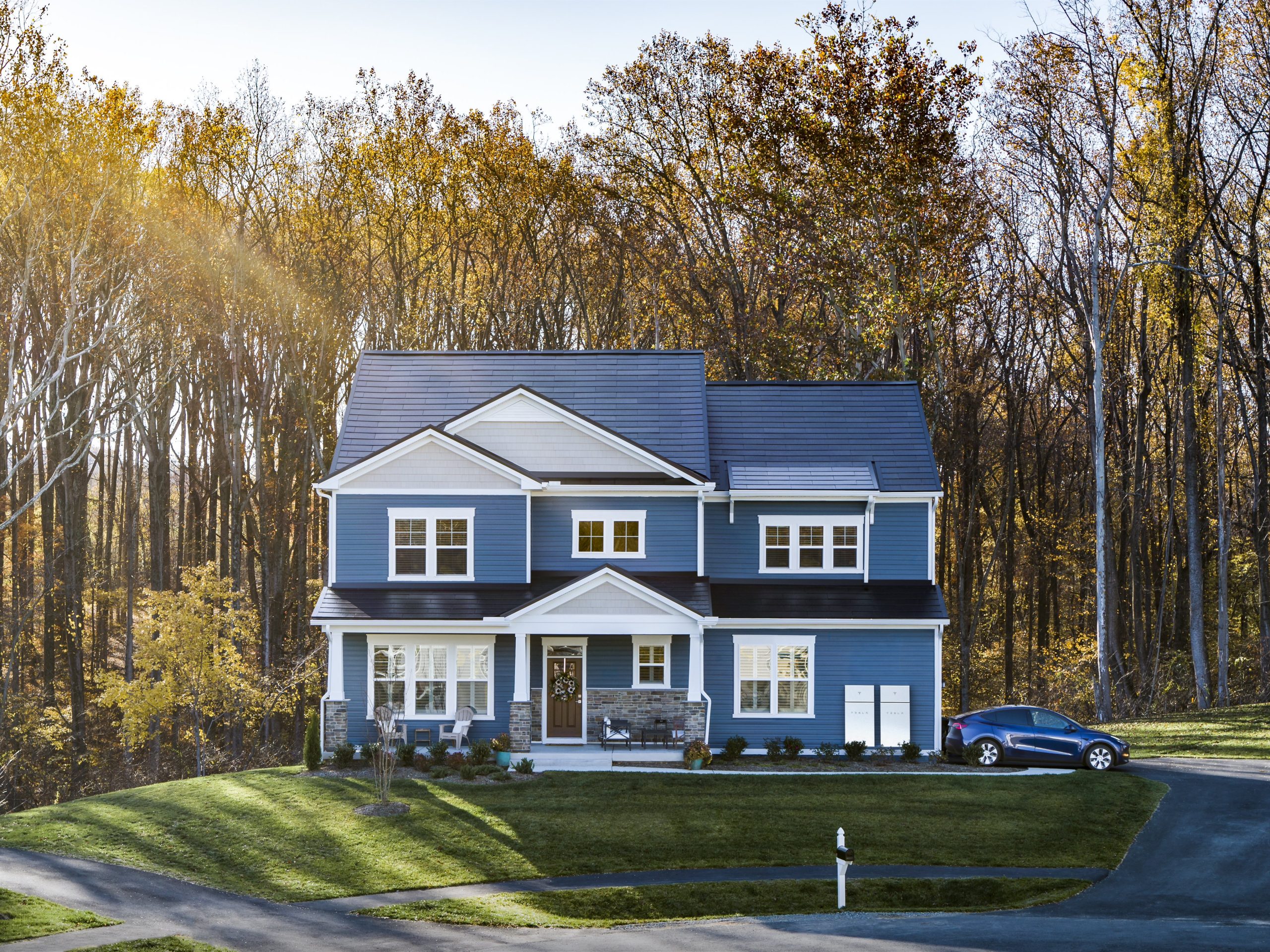

Energy
Tesla Energy takes part in CA’s record-breaking 2.2 GWh battery storage project
Tesla Energy is poised to participate in California’s initiative to build one of the world’s largest battery systems. After a historic 4-1 vote, California utility regulators approved a proposal put forward by Pacific Gas & Electric, which aimed to replace three natural gas-fired power plants in the state with utility-grade lithium-ion batteries.
When completed, the projects approved by the California Public Utilities Commission (CPUC) would be among the largest battery installations in the United States. Among these is a 300 MW lithium-ion battery from Dynegy, as well as a 182.5 MW Tesla battery system. Installations from Hummingbird Energy Storage (75 MW) and mNOC (10MW) allow the entire clean energy initiative to reach a total of 567 MW. Considering that all the battery systems have four-hour ratings, the total energy rating of the entire project is an impressive 2.27 GWh.
Among the most notable gas-powered plants that would be replaced by the battery installations is a facility in Moss Landing, CA, located around 15 miles north of Monterey. All the battery systems, particularly Tesla’s 182.5 MW installation and Dynegy’s 300 MW battery, will be located on the site of the outgoing gas-powered plant.

Apart from being impressive in its size, the recently approved battery projects will not only connect to the area’s substation and transmission infrastructure built for the Moss Landing Power Plant; the lithium-ion batteries will replace the entire range of services provided by the plant itself as well. Dynegy, who owns the gas-powered plant, noted back in February that it would likely retire the facility. The CPUC has stated that another plant in Gilroy would probably go offline in the near future as well.
While the benefits of industry-grade batteries are notable, PG&E’s proposal met a notable amount of opposition nonetheless, particularly from gas generator Calpine, the California Direct Access Customer Coalition, and the California Community Choice Association. According to the project’s skeptics, the investment in the lithium-ion battery systems would not be a good use of taxpayer funds. Despite the opposition, though, the large-scale energy storage project was approved nonetheless.
With the project’s approval from the CPUC, California has managed to take a step forward in its efforts to decarbonize its electric system by shifting from natural gas to greener solutions. In a statement to GreenTechMedia, Matt Vespa, staff attorney at Earthjustice, stated that the upcoming battery installations would give several benefits to the state’s residents.
“Not only will this help California integrate solar and reduce the need to ramp up polluting gas plants in the late afternoon, but it will also provide local reliability needs in an area that is currently highly reliant on gas-fired generation. We are getting multiple benefits, pushing gas off the system, and moving a step closer to a decarbonized grid,” he said.

While Tesla’s Energy business usually takes a back seat to its electric car business, the company’s battery storage division continues to grow rapidly. Billionaire investor Ron Baron, for one, stated that he believes Tesla’s energy business could be worth $500 billion on its own by 2030. In a way, part of this projected growth is attributed to the declining price of batteries and the performance of projects such as the South Australia Powerpack farm, which has all but triggered a clean energy movement in the region. In a statement earlier this year, Tesla CTO JB Straubel remarked that battery technology has progressed to a point where it now has the potential to replace inefficient and dirty power plants.
“I think what we’ll see is we won’t build many new peaker plants, if any. Already what we’re seeing happening is the number of new ones being commissioned is drastically lower, and batteries are already outcompeting natural gas peaker plants,” Straubel said.
The emergence of Tesla Energy at this point in time could bode well for the company, particularly since battery storage is expected to grow in the future. A study from GTM Research, for one, estimates that sales of energy storage for both residential and utility markets in America would probably hit $541 million this year, before passing $1 billion in 2019, and eventually reaching $4.6 billion in 2023. If Tesla Energy can ramp its operations in time, and if its batteries prove themselves in the field, the electric car maker could very well position itself strategically in what could, in more ways than one, be a clean energy gold rush.

Energy
Tesla starts hiring efforts for Texas Megafactory
Tesla’s Brookshire site is expected to produce 10,000 Megapacks annually, equal to 40 gigawatt hours of energy storage.

Tesla has officially begun hiring for its new $200 million Megafactory in Brookshire, Texas, a manufacturing hub expected to employ 1,500 people by 2028. The facility, which will build Tesla’s grid-scale Megapack batteries, is part of the company’s growing energy storage footprint.
Tesla’s hiring efforts for the Texas Megafactory are hinted at by the job openings currently active on the company’s Careers website.
Tesla’s Texas Megafactory
Tesla’s Brookshire site is expected to produce 10,000 Megapacks annually, equal to 40 gigawatt hours of energy storage, similar to the Lathrop Megafactory in California. Tesla’s Careers website currently lists over 30 job openings for the site, from engineers, welders, and project managers. Each of the openings is listed for Brookshire, Texas.
The company has leased two buildings in Empire West Business Park, with over $194 million in combined property and equipment investment. Tesla’s agreement with Waller County includes a 60% property tax abatement, contingent on meeting employment benchmarks: 375 jobs by 2026, 750 by 2027, and 1,500 by 2028, as noted in a report from the Houston Business Journal. Tesla is required to employ at least 1,500 workers in the facility through the rest of the 10-year abatement period.
Tesla’s clean energy boom
City officials have stated that Tesla’s arrival marks a turning point for the Texas city, as it highlights a shift from logistics to advanced clean energy manufacturing. Ramiro Bautista from Brookshire’s economic development office, highlighted this in a comment to the Journal.
“(Tesla) has great-paying jobs. Not just that, but the advanced manufacturing (and) clean energy is coming to the area,” he said. “So it’s not just your normal logistics manufacturing. This is advanced manufacturing coming to this area, and this brings a different type of job and investment into the local economy.”
Energy
Tesla and Samsung SDI in talks over new US battery storage deal: report
The update was related by industry sources and initially reported by South Korean news outlets.

Recent reports have suggested that Tesla and Samsung SDI are in talks over a potential partnership to supply batteries for large-scale energy storage systems (ESS).
The update was related by industry sources and initially reported by South Korean news outlets.
ESS batteries to be built at Samsung’s Indiana plant
As noted in a report from Korea JoongAng Daily, the demand for energy storage systems has been growing rapidly in North America, thanks in no small part to the surge in AI investments across numerous companies. With this in mind, Tesla has reportedly approached Samsung SDI about a potential battery supply deal.
The deal is reportedly worth over 3 trillion Korean won (approximately $2.11 billion) and will span three years, according to The Korea Global Economic Daily. A battery supply deal with Samsung SDI could make sense for Tesla as the company already has a grid-scale battery, the Megapack, which is perfect for industrial use. Samsung SDI could simply supply cells for the EV maker.
Production of the batteries would reportedly take place at Samsung SDI’s joint venture factory with Stellantis in Indiana, which is currently under construction. Samsung SDI recently announced plans to use part of that plant’s EV lines to produce cells for ESS, with a targeted capacity of 30 GWh by the end of next year.
Tesla and Samsung’s partnership
At present, only a handful of manufacturers, including Korea’s LG Energy Solution, Samsung SDI, SK On, and Japan’s Panasonic, are capable of producing energy storage-scale batteries domestically in the United States. A Samsung SDI official issued a comment about the matter, stating, “Nothing has been finalized regarding cooperation with Tesla.”
The possible energy storage system deal adds another layer to Tesla’s growing collaboration with Samsung, which is already in line as a partner in the upcoming production of Tesla’s AI5 and AI6 chips. Early sample manufacturing of the AI6 is expected to begin in South Korea, with mass production slated for Samsung’s Texas-based Taylor foundry when it starts operations.
The AI6 chip will power Tesla’s next wave of high-volume projects, including the Optimus humanoid robot and the autonomous Cybercab service. Musk has called the partnership with Samsung a “real collaboration,” adding that he personally plans to “walk the line” at the Taylor facility to speed up progress.
Energy
Tesla VP hints at Solar Roof comeback with Giga New York push
The comments hint at possible renewed life for the Solar Roof program, which has seen years of slow growth since its 2016 unveiling.

Tesla’s long-awaited and way underrated Solar Roof may finally be getting its moment. During the company’s Q3 2025 earnings call, Vice President of Energy Engineering Michael Snyder revealed that production of a new residential solar panel has started at Tesla’s Buffalo, New York facility, with shipments to customers beginning in the first quarter of 2026.
The comments hint at possible renewed life for the Solar Roof program, which has seen years of slow growth since its 2016 unveiling.
Tesla Energy’s strong demand
Responding to an investor question about Tesla’s energy backlog, Snyder said demand for Megapack and Powerwall continues to be “really strong” into next year. He also noted positive customer feedback for the company’s new Megablock product, which is expected to start shipping from Houston in 2026.
“We’re seeing remarkable growth in the demand for AI and data center applications as hyperscalers and utilities have seen the versatility of the Megapack product. It increases reliability and relieves grid constraints,” he said.
Snyder also highlighted a “surge in residential solar demand in the US,” attributing the spike to recent policy changes that incentivize home installations. Tesla expects this trend to continue into 2026, helped by the rollout of a new solar lease product that makes adoption more affordable for homeowners.
Possible Solar Roof revival?
Perhaps the most intriguing part of Snyder’s remarks, however, was Tesla’s move to begin production of its “residential solar panel” in Buffalo, New York. He described the new panels as having “industry-leading aesthetics” and shape performance, language Tesla has used to market its Solar Roof tiles in the past.
“We also began production of our Tesla residential solar panel in our Buffalo factory, and we will be shipping that to customers starting Q1. The panel has industry-leading aesthetics and shape performance and demonstrates our continued commitment to US manufacturing,” Snyder said during the Q3 2025 earnings call.
Snyder did not explicitly name the product, though his reference to aesthetics has fueled speculation that Tesla may finally be preparing a large-scale and serious rollout of its Solar Roof line.
Originally unveiled in 2016, the Solar Roof was intended to transform rooftops into clean energy generators without compromising on design. However, despite early enthusiasm, production and installation volumes have remained limited for years. In 2023, a report from Wood Mackenzie claimed that there were only 3,000 operational Solar Roof installations across the United States at the time, far below forecasts. In response, the official Tesla Energy account on X stated that the report was “incorrect by a large margin.”








